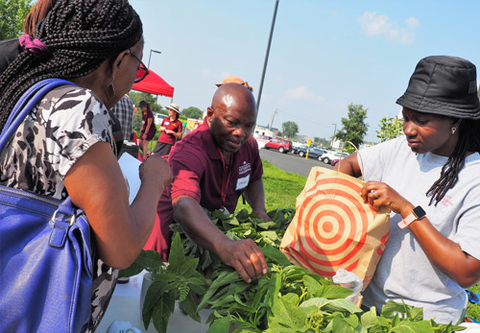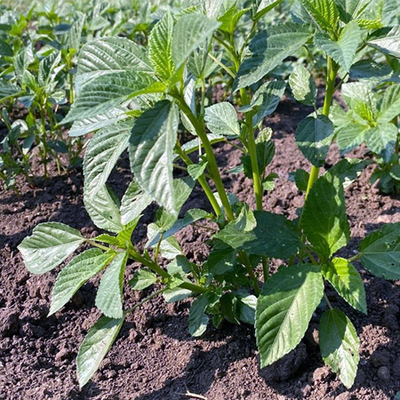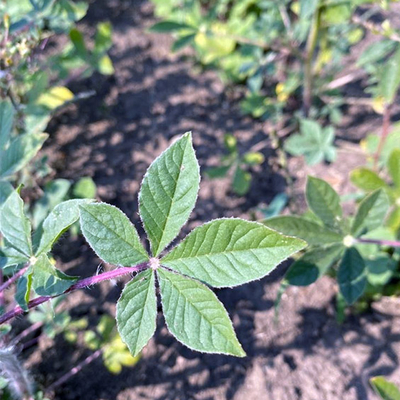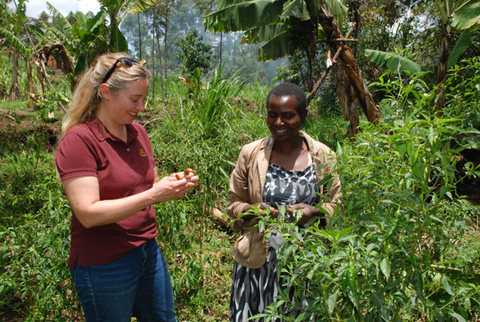University of Minnesota collaboration on traditional plants broadens to include more farmers and gardeners from African nations.
Most Minnesota gardeners and farmers have never heard of jute mallow. Nor kittley. Nor spider wisp.
But there are Minnesotans who know, grow and love these vegetables. They come from Kenya, Nigeria, Cameroon, Ghana, Somalia, Ethiopia and beyond.
University of Minnesota Extension educators and volunteers are updating their knowledge, studying these crops through collaboration with the University’s Plant Breeding Center, led by its director, Rex Bernardo, and with local African communities.
From one gardener to many
As a University-trained Extension Master Gardener volunteer, Chidi Chidozie is experienced in relaying research-based information. As a Nigerian American who has gardened his whole life, he’s passionate about the plants.
“My dream is to create a global garden, where everyone can share the plants from their cultures,” he says.
People might not expect many African plants to grow in Minnesota. “Surprisingly many of them do,” says Chidozie. “A bigger challenge is sourcing the seeds.”
Chidozie, who obtains seeds from contacts in Texas, shares them with researchers. He hopes that seeds can more often be harvested from crops here, but winter often arrives before the plants develop seedheads.
Chidozie gave tours of the University’s African plant plots in August 2023 when Extension and the U’s Plant Breeding Center brought nearly 100 visitors to campus. Graduate students also led tours and distributed samples. Afterward, everyone sat down for a global dinner.
“These nutritious plants are important to many people and our volunteers who serve community gardens are getting questions about growing them here,” says Terry Straub, an Extension educator with the Master Gardener Volunteer Program in Hennepin County. “Chidi and this project on campus are helping them provide answers.”
Meeting wider demand
It’s not only the climate and pests that are different here. It’s also the way of doing business on the farm.
Vitalis and Jennet Tita, growing produce in Minnesota since 2008, have enough experience now to mentor others. Their company, Better Greens, LLC, in Montrose serves a niche market. Demand, with Minnesota’s expanding African population, is no problem.
Finding fertile land to buy or rent is another story.
“I’m a full-fledged farmer with all of the challenges and barriers of an emerging farmer,” says Vitalis Tita.
The Minnesota Department of Agriculture is committed to helping through grants and other support, but a large investment is still needed. Tita believes organizing with others to grow cooperatively is one answer. And he has been advocating for system changes, too.
Tita attended the African plant night after hearing about it through his network. He was pleased to see the interest others have. Despite challenges, the kind of life he and Jennet have built with their five children is something he heartily recommends.
“We are a family-owned farm — we run it together,” he says. “The kids are right there with us doing chores. It builds character.”
Get to know three traditional vegetables
For information on growing and management, visit Growing staple vegetables from around the world in Minnesota.
Jute mallow, or Molokhia (Corchorus olitorious)
Originating in ancient Egypt, jute mallow is packed with nutrients to fortify stews and soups, and as with many plants, has been used in traditional medicine.
African eggplant, or kittley (Solanum aethiopicum)
Varying from the size of a pea to a tomato, traditionally medicinal African eggplant grows bitter as it ripens. West African farmers have used selective breeding to improve the flavor for stews.
Spider wisp, or chinsaga (Cleome gynandra)
Tolerant to drought and self-seeding, this nutrient-rich green is sometimes considered a weed, but it appears frequently in the cuisine of Kenya, as well as in parts of Asia.
In Kenya, mutual learning with farmers
In partnership with Kisii University, Extension several years ago received funding from the USDA Scientific Cooperation and Research Program to help 200 female farmers improve the quality of their vegetables in the field and on the way to markets.
Now, those farmers are helping growers in Minnesota, via Extension.
“We needed to learn more about African crops and how they are usually grown in order to help farmers in Minnesota who are looking for support,” says Natalie Hoidal, one of two Extension food systems educators who visited Kenya in 2023.
One of the first farmers to host them was Rose Kerubo. Her conservation practices include using banana palm trunks for erosion control and composted manure from her cows as fertilizer. She has developed management strategies to control flea beetles and manage diseases.
“We don’t have banana palm trunks, but understanding those strategies helps educators suggest similar solutions available here,” says Annalisa Hultberg, the other visiting food systems educator.
“The relationship between the University of Minnesota and Kisii University has helped Kisii U develop Extension-like ways to reach Kenyan farmers,” says John Vreyens, Extension global initiatives director.
Hoidal adds, “It’s also helping us develop more precise recommendations on nutrients, pests and planting times so emerging farmers can grow their crops more successfully in Minnesota.”
Permission is granted to news media to republish our news articles with credit to University of Minnesota Extension. Images also may be republished; please check for specific photographer credits or limited use restrictions in the photo title.






